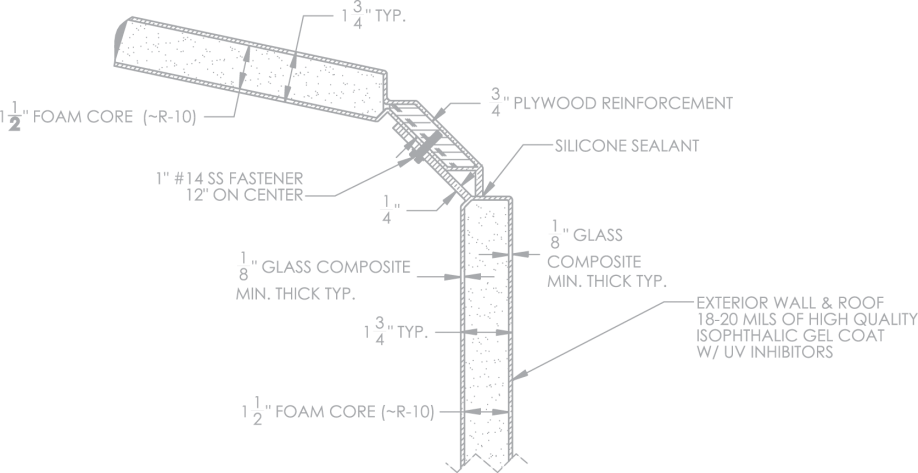From Waste to Wonder: How Recycled Composites Are Changing Various Applications
As industries worldwide are progressively prioritizing sustainability and ecological obligation, the usage of recycled composites has actually arised as a transformative remedy throughout various sectors. From boosting the efficiency of automobile components to offering lasting options in building materials, the applications of recycled compounds are promising and substantial.
The Surge of Recycled Composites
The increasing fostering of recycled composites in numerous markets shows a growing acknowledgment of their economic and environmental advantages. Recycled composites, stemmed from materials such as reclaimed carbon fiber or recycled plastics, use a sustainable alternative to typical materials without compromising on efficiency. Industries ranging from vehicle and building to aerospace and customer products are significantly turning to recycled compounds to fulfill their manufacturing demands.
One key vehicle driver behind the rise of recycled compounds is the push in the direction of sustainability and eco-friendliness. Business are under increasing pressure to lower their carbon impact and reduce waste generation. Recycled compounds provide an option by utilizing materials that would certainly otherwise end up in land fills, thus advertising a circular economic climate.
In addition, the economic advantages of utilizing recycled compounds can not be ignored. These materials are usually much more economical than their virgin equivalents, offering business a means to reduce production expenses without giving up quality. As improvements in reusing technologies remain to enhance, the adoption of recycled compounds is anticipated to more increase across diverse industries.
Advantages in Automotive Market

Lasting Solutions in Construction
Incorporating sustainable techniques in building and construction projects is necessary for decreasing ecological influence and advertising lasting viability in the constructed setting. With the construction sector being among the largest contributors to carbon emissions and waste generation around the world, the adoption of sustainable options is vital in minimizing these adverse impacts. Recycled composites are playing a significant role in revolutionizing building and construction techniques by using a much more environment-friendly alternative to traditional structure materials.
Recycled composites, stemmed from products such as recovered rubber, plastic, and wood, provide a sustainable alternative for different construction applications. These products not only help in lowering waste yet likewise provide adaptability, strength, and toughness comparable to conventional building materials. By incorporating recycled compounds right into building styles, building and construction projects can add to source conservation and energy efficiency while preserving high performance standards.
In addition, using recycled composites in building and construction aligns with the growing need for eco-friendly structures and sustainable facilities. As ecological regulations end up being stricter and the concentrate on sustainability heightens, the building and construction industry is progressively transforming to recycled compounds as a feasible solution for creating eco-conscious buildings and frameworks.
Eco-Friendly Innovations in Product Packaging
Revolutionizing the realm of sustainable packaging options, eco-friendly developments are paving the method for eco mindful techniques in the product packaging sector. In feedback to the international call for decreasing plastic waste and reducing carbon impacts, firms are significantly transforming to green product packaging choices. Biodegradable products such as mushroom product packaging, seaweed-based movies, and compostable plastics supply encouraging remedies to the plastic air pollution situation. These cutting-edge products not just disintegrate normally, minimizing ecological influence, however also provide similar performance and resilience to traditional product packaging choices.
In addition, the combination of recycled products into packaging manufacturing procedures better enhances sustainability efforts. By integrating post-consumer recycled Website web content, firms can reduce the demand for virgin materials, save all-natural resources, and promote a round economy in the packaging sector.
Changing Textiles With Recycled Composites
In the realm of lasting materials, the focus currently changes in the direction of changing textiles with the innovative use recycled compounds. This advancement in fabric manufacturing is driven by the pushing need for more green techniques in the style and fabric sectors. Recycled compounds supply a promising service by combining materials like plastics, carbon fiber, and glass fiber to develop functional and resilient fabrics.
Among the key advantages of making use of recycled composites in textiles is the capability to repurpose waste products that would otherwise finish up in land fills. By incorporating recycled aspects right into fabrics, producers can decrease their environmental influence and add to a more circular economic situation - composites. Additionally, textiles made from recycled composites usually exhibit enhanced stamina, toughness, and efficiency qualities, making them suitable for a variety of applications
As consumer need for sustainable items proceeds to climb, the adoption of recycled composites in textiles is poised to expand considerably. This shift in the direction of his explanation even more eco-friendly fabric manufacturing not only benefits the planet but additionally opens brand-new chances for development and imagination in the fashion and fabric industries.
Conclusion

From boosting the performance of auto elements to offering lasting choices in building products, the applications of recycled composites are encouraging and large. Recycled composites, acquired from materials such as redeemed carbon fiber or recycled plastics, provide a lasting alternative to typical materials without endangering on performance. In addition, the use of recycled compounds promotes the circular economy by drawing away waste from land fills and decreasing the demand for virgin raw materials - composites.Recycled compounds, acquired from products such as recovered rubber, wood, and plastic, give a lasting alternative for numerous building and construction applications.In the world of lasting materials, the focus now shifts in the direction of changing textiles with the innovative use of recycled composites